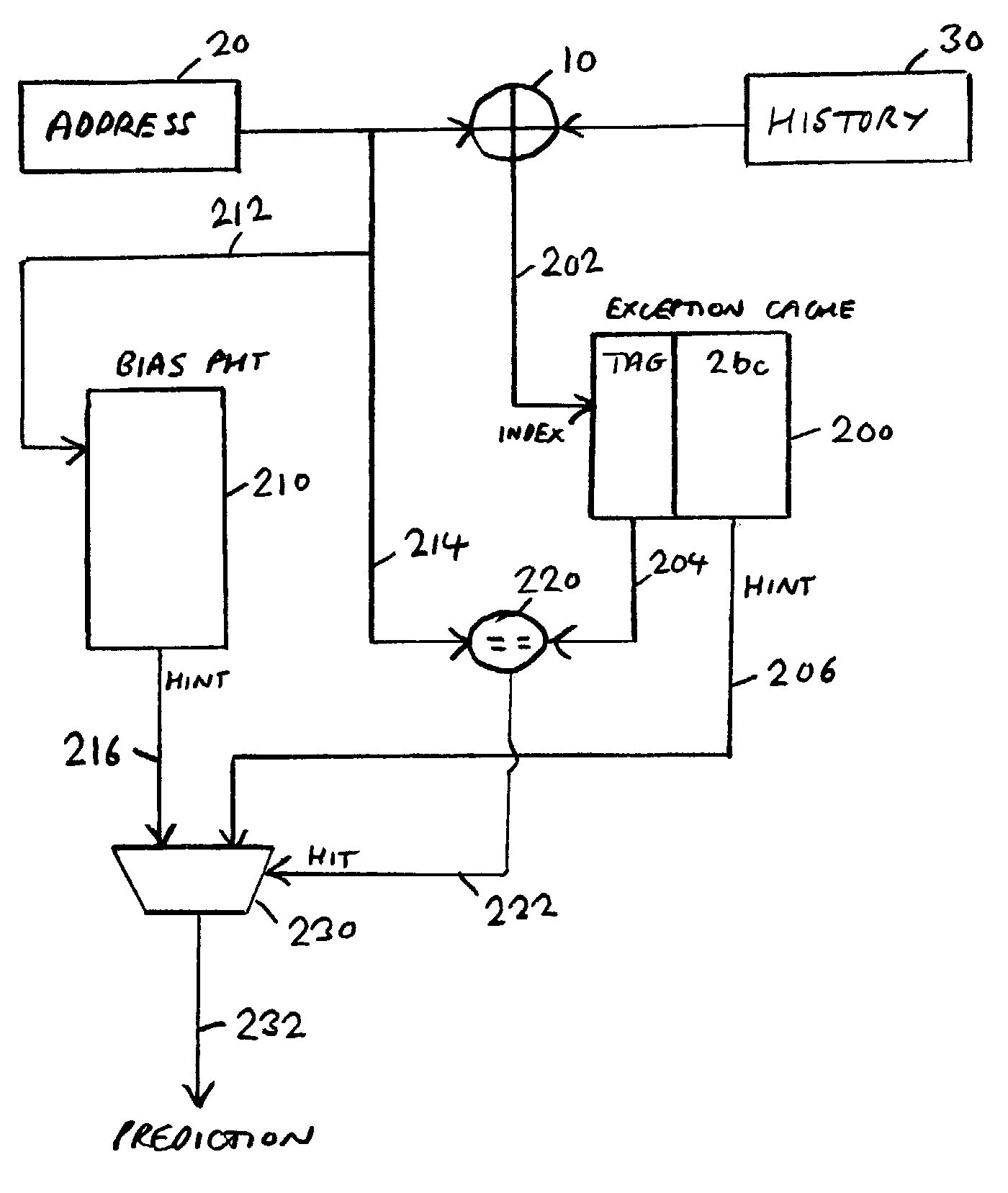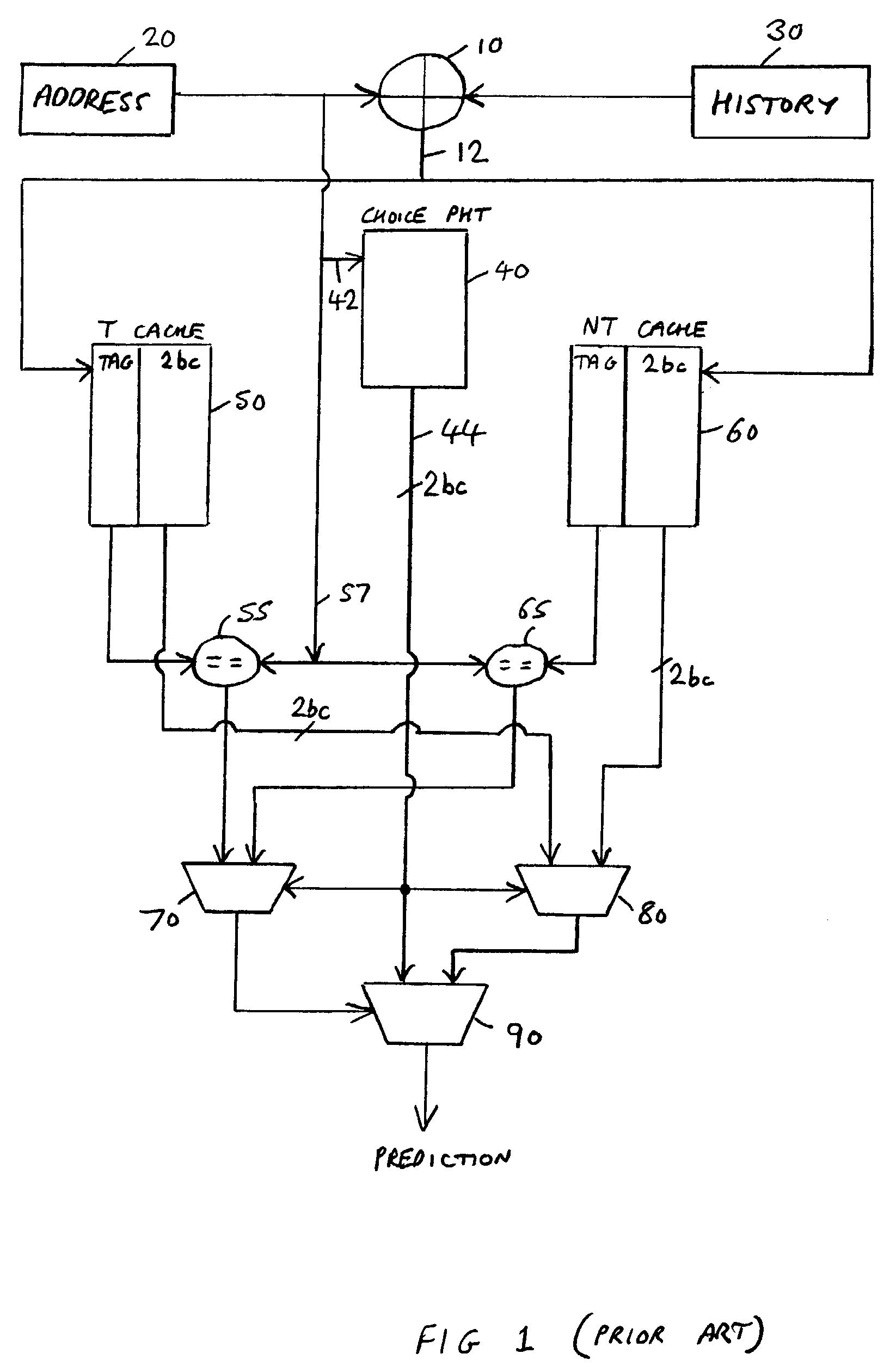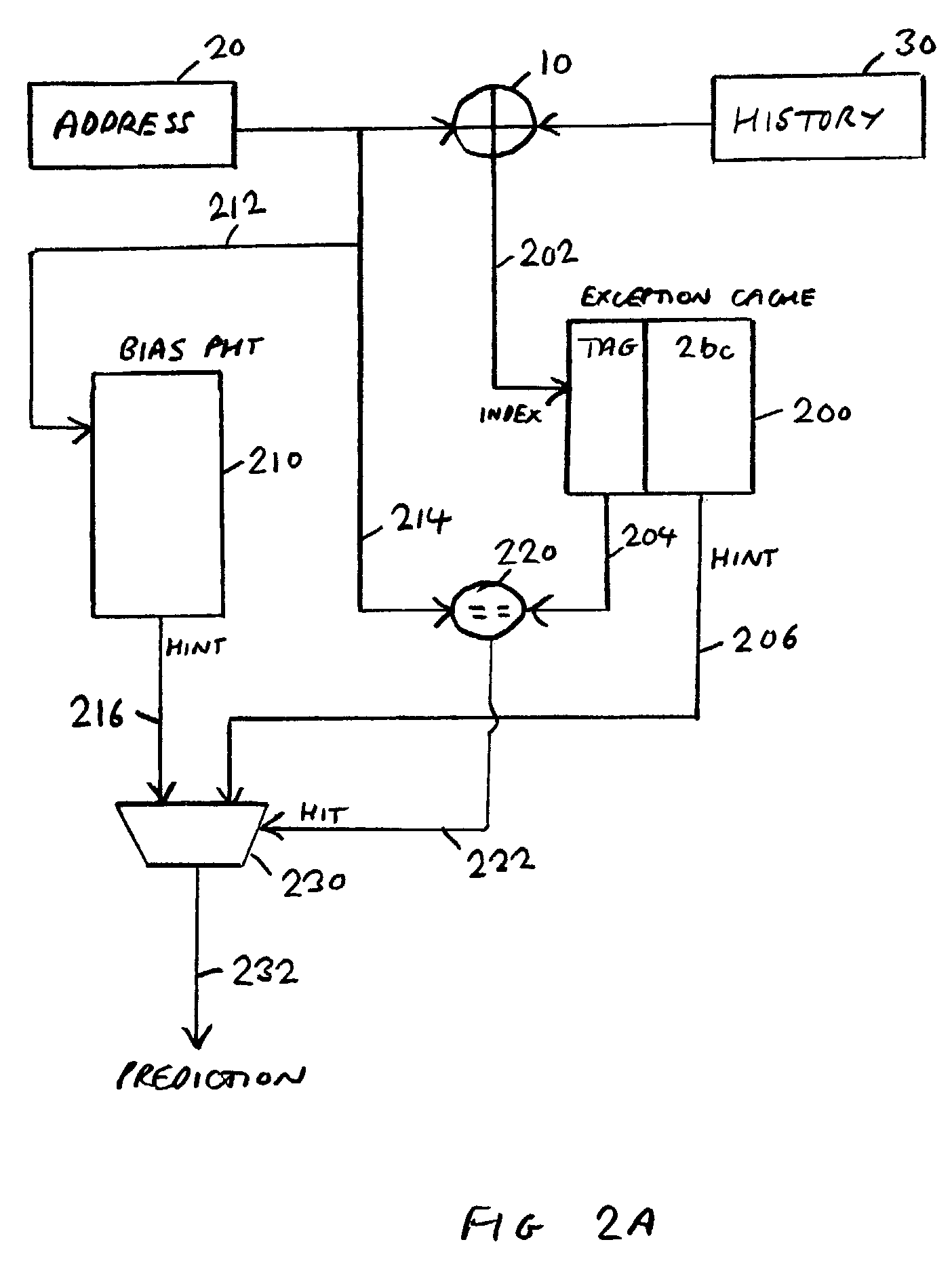Two-level branch prediction apparatus
a branch prediction and apparatus technology, applied in the direction of instruments, specific program execution arrangements, program control, etc., can solve the problem of quite limited number of separate entries that can be provided in each cache, and achieve the effect of reducing aliasing issues
- Summary
- Abstract
- Description
- Claims
- Application Information
AI Technical Summary
Benefits of technology
Problems solved by technology
Method used
Image
Examples
Embodiment Construction
[0058]FIG. 2A is a block diagram illustrating a branch prediction scheme in accordance with one embodiment of the present invention. In a similar manner to that described earlier with reference to the YAGS prediction scheme, index generation logic 10 is operable to receive both an address 20 for an instruction to be evaluated, and history data from a history register 30 identifying for a number of preceding branch instructions whether those branch instructions were taken or not taken. The index generation logic 10 is operable to generate, from a logical combination of the history data and the branch instruction's address, an index output over path 202 to a single exception cache 200. In alternative embodiments, it will be appreciated that the index generation logic may be arranged to generate an index based solely on the history data.
[0059]Additionally, a first portion of the instruction address 20 is routed over path 212 to act as an index into a bias PHT 210. The bias PHT 210 is a...
PUM
 Login to View More
Login to View More Abstract
Description
Claims
Application Information
 Login to View More
Login to View More - R&D
- Intellectual Property
- Life Sciences
- Materials
- Tech Scout
- Unparalleled Data Quality
- Higher Quality Content
- 60% Fewer Hallucinations
Browse by: Latest US Patents, China's latest patents, Technical Efficacy Thesaurus, Application Domain, Technology Topic, Popular Technical Reports.
© 2025 PatSnap. All rights reserved.Legal|Privacy policy|Modern Slavery Act Transparency Statement|Sitemap|About US| Contact US: help@patsnap.com



